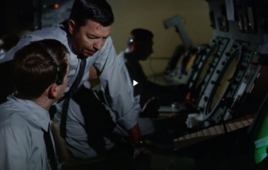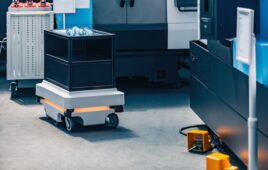The three small cabins on Goose Pond where my wife’s family has vacationed for 50 years are completely “off-grid” and offer a much-needed respite from the jarring pace of “civilized life.” Accessible only by a small boat, the camp has a few propane-powered amenities but no electricity, phone, Internet, or other digital distractions to slowly erode one’s soul. The week I spend up there most summers is a time of healing, filled to the brim with books, graciously prepared meals, dips in the rocky pond, and random naps. But, much as I fancy myself a modern-day Thoreau, this summers’ sojourn was punctuated by several reminders about how dependent on technology I’ve become.
These incidents also got me to thinking about whether important parts of our society and the economy that it’s built on might be equally vulnerable to an over-dependence on potentially fragile technologies.
It started when my trusty 2003 Honda Element began acting up during the 524-mile drive from West Windsor NJ to East Holden ME. Its automatic transmission began shifting erratically early in the trip but it didn’t get worse so we decided to cautiously push onward and try to find a mechanic after we got to camp. After we unpacked, I kicked on my Smartphone (yes, we have cell coverage, but we keep them off most of the time) to locate a well-reviewed local mechanic who could fix our problem. I quickly discovered that while my carrier had a roaming agreement with the local carrier for voice, text, and data, the data limits were so severe that I quickly burned through my allocated megabytes and lost any access to the Internet.
Undaunted, I boated back across the lake, threaded my way up the deeply rutted logging road that leads to the highway, and began the 10 mile drive to Bangor in search of either an Internet connection or an old-fashioned phone book. After discovering that Dunkin Donuts has terrible Wi-Fi, I got a solid connection at a nearby Tim Horton’s which, incidentally, turned out to be serving much better coffee than its tech-challenged neighbor. With the smartphone temporarily back in action, I quickly located a mechanic who had both a Honda certification and a set of glowing customer reviews and set up an appointment to drop off the Element the next day.
Bumping back down the access road towards the dock, I briefly thought I’d gotten off easy but soon discovered that being a temporary Internet have-not would impact me in several other unpleasant ways.
The next morning, as I prepared to take the Element to the repair shop, I realized that I had no idea of how to get there and the navigation app on my phone could not help me without its connection to Google Maps. Sheepishly, I called the shop for directions and fished out a musty paper map that had not seen the light of day in several years. After a few navigational misadventures, I dropped off the truck and rode back to the dock with one of my in-laws. Later that day, I got a text from my daughter at college who needed help with a few details concerning her enrollment for the fall semester. Since that would require Internet access, I couldn’t do anything until the morning when I’d be in town to pick up my truck.
Due to several unexpected technical problems, it took two trips between the lake and Tim Horton’s before I finally got everything straightened out. By the time I got back to the lake it was pitch dark and I had to thread the boat across a mile and a half of rocky waters using only the tiny headlamp I keep in my utility bag and a keen sense of smell.
Being digitally disabled caused several other inconveniences during the week, including being unable to navigate or avoid the traffic jams on our drive home until we got near Boston and picked up Internet service again. Nothing I experienced was life- or career-threatening, but it made me keenly aware of how dependent I’ve become on anytime/anywhere Internet access for many trivial and critical aspects of my life. Even losing connectivity for a few days was a painful experience and I shuddered at what life would be like if some calamity took me offline for much longer.
As we drove home, I began to think about how much of our nation’s economy and basic infrastructure relies on the Internet and other fragile digital resources. Since hurricanes, earthquakes and fires are inevitable, and cybersabotage has become the point of the spear for many aggressor nations, we need to start asking uncomfortable questions such as;
– Do the consumer and industrial products we produce today have to become shiny bricks when their connectivity or GPS signal is lost?
– Is there a way to push enough intelligence to the edge of a transportation or logistics network that it can run in a gracefully degraded mode if a natural disaster, or some more sinister event, takes out its communications?
– We are already developing guidelines, standards, and design practices to “harden” some types of networked products against cyber-attacks, but do they include guidance on retaining as much functionality as possible when they go off-network?
I’m sure you’ve got even more interesting questions than I do. Please share them with me, and your fellow readers, by sending them to [email protected]
Filed Under: Industry regulations




